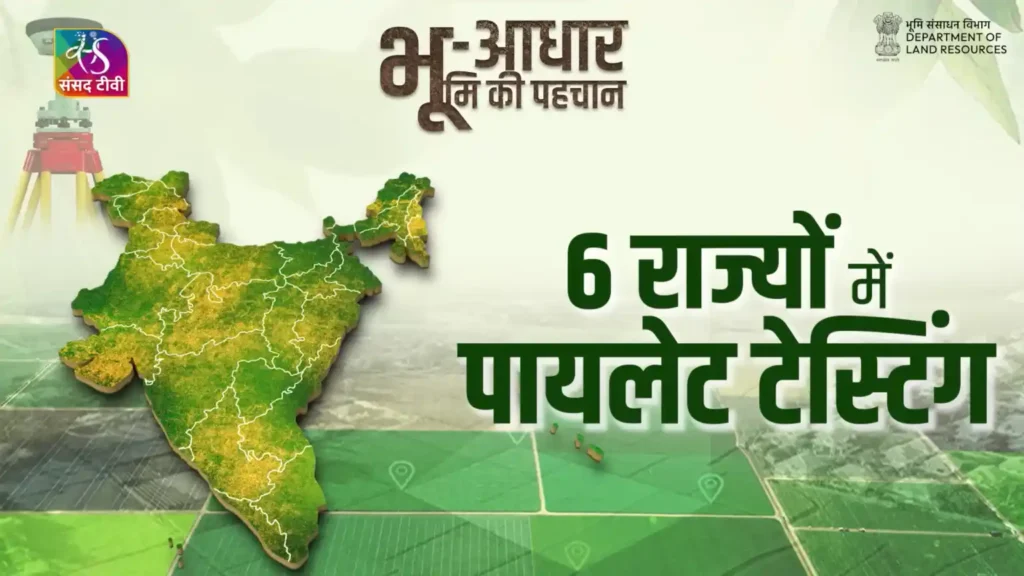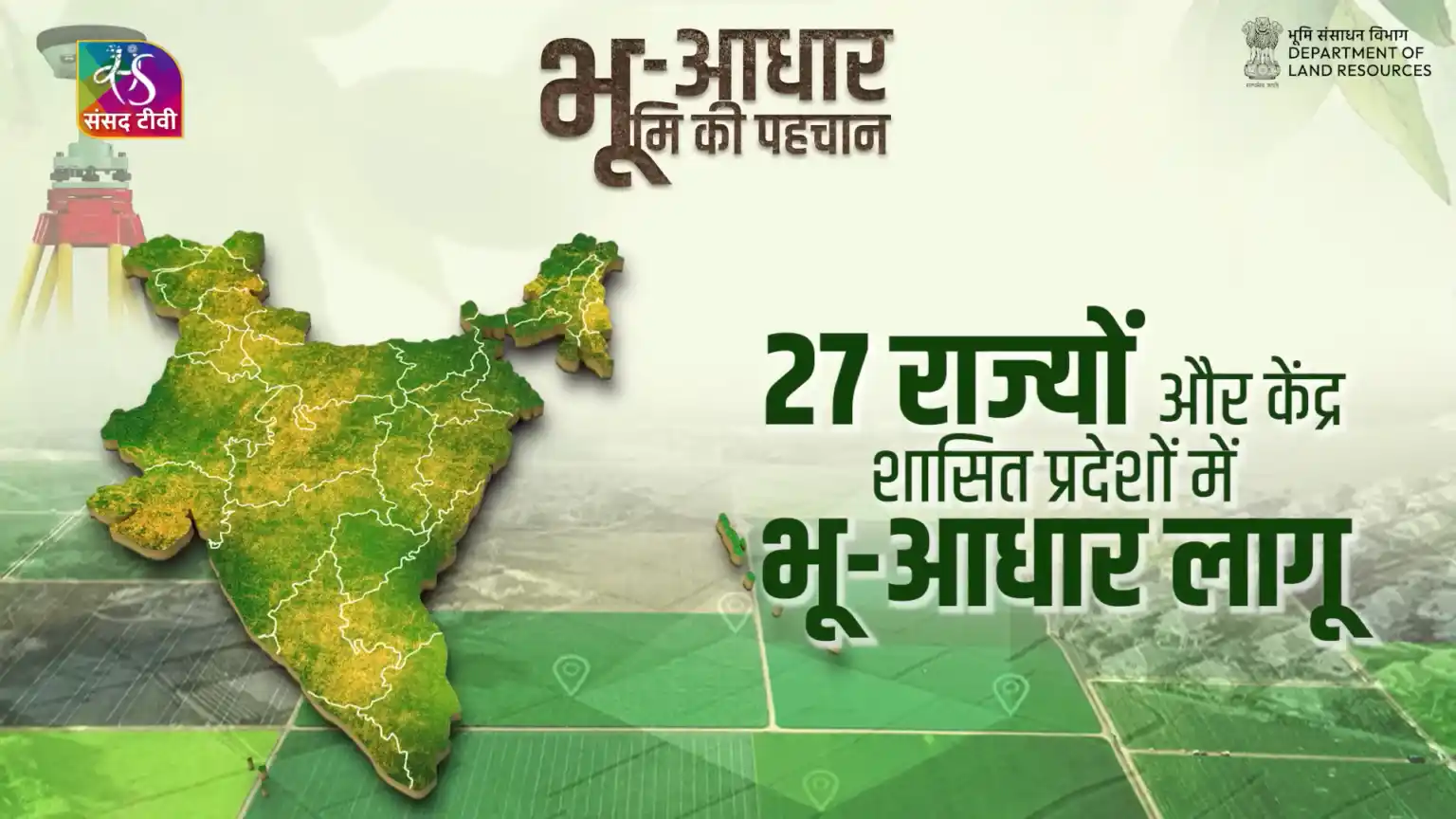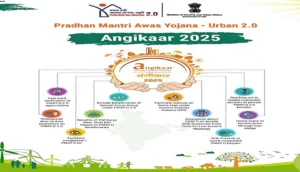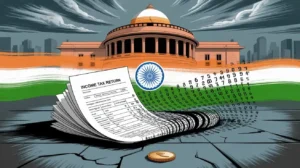India has made great strides in digitizing land records over the past decade by implementing the Unique Land Parcel Identification Number (ULPIN) system, also known as Bhu-Aadhaar. This system aims to provide a unique digital identification number to every plot of land in the country and link land records to this identification number. Here is an overview of ULPIN/Bhu-Aadhaar, how it works, its key benefits, and the progress made so far.
What is ULPIN/Bhu-Aadhaar?
ULPIN or Bhu-Aadhaar is a 14-digit unique identification number issued to each plot of India as part of the Digital India Land Records Modernization Programme (DI-LRMP). This ambitious project was launched in 2008 to digitize India’s land records and provide an integrated land records management system.
The key objectives of ULPIN/Bhu-Aadhaar are:
- To assign a unique ID to each plot of land for easy identification and retrieval of records
- To create accurate digital land records with details of land owners, plot boundaries, area, usage, etc.
- To link land records and property registration processes
- To facilitate the online delivery of land record services
- To assist in government planning by maintaining updated land data
How does ULPIN/Bhu-Aadhaar work?
The ULPIN system operates through a sophisticated process that combines modern technology with traditional land surveying:
- Geotagging & Surveying
- Land parcels are precisely located using GPS technology
- Professional surveyors verify and measure boundaries
- All physical characteristics are documented
- Data Collection
- Owner details are recorded
- Land use and classifications are documented
- Area measurements are verified
- Historical records are digitized
- ULPIN Generation: The 14-digit code includes:
- State code
- District code
- Sub-district code
- Village code
- Unique plot ID number
Once the ULPIN is generated, it is stamped on the physical land record document held by the owner. The same ULPIN will be permanently attached to the plot of land. Even if the land is transferred, subdivided, or undergoes any change, the ULPIN will remain the same for that geographic boundary.
Key Benefits of ULPIN/Bhu-Aadhaar
ULPIN brings several advantages for property owners and stakeholders:
For Property Owners
- Easy access to land records online
- Reduced risk of property fraud
- Faster property transactions
- Clear proof of ownership
- Simplified mutation process
For Government & Institutions
- Accurate land records database
- Better policy planning
- Reduced land disputes
- Improved revenue collection
- Enhanced transparency
Technical Framework and Implementation
At its core, ULPIN operates on a robust technical framework that combines modern geospatial technology with traditional land administration practices. The system utilizes:
Advanced Geospatial Technologies
The implementation leverages state-of-the-art surveying and mapping technologies, including:
- High-precision GPS equipment for accurate boundary demarcation
- Advanced satellite imagery for comprehensive land mapping
- Drone-based surveys for detailed terrain mapping
- Sophisticated GIS tools for data processing and analysis
Data Integration Architecture
The system implements a multi-layered data integration approach:
- Seamless integration of spatial and non-spatial data
- Real-time synchronization with registration systems
- Automated verification mechanisms
- Robust data validation protocols
Progress So Far
dashboard ULPIN Dashboard
Unique Land Parcel Identification Number Generation Status
view_list
All States/UTs ULPIN Generation Status
search
| Rank swap_vert | State/UT swap_vert | ULPIN Generated swap_vert |
|---|---|---|
| 1 | BIHAR | 42,774,000 |
| 2 | UTTAR PRADESH | 41,376,839 |
| 3 | MADHYA PRADESH | 34,600,000 |
| 4 | KARNATAKA | 8,475,463 |
| 5 | GUJARAT | 5,643,030 |
| 6 | ANDHRA PRADESH | 5,636,825 |
| 7 | TRIPURA | 2,382,915 |
| 8 | KERALA | 2,000,000 |
| 9 | PUNJAB | 1,760,916 |
| 10 | JAMMU AND KASHMIR | 1,179,571 |
| 11 | HARYANA | 921,685 |
| 12 | GOA | 789,875 |
| 13 | ODISHA | 536,564 |
| 14 | JHARKHAND | 296,616 |
| 15 | MAHARASHTRA | 282,810 |
| 16 | WEST BENGAL | 249,200 |
| 17 | ASSAM | 168,753 |
| 18 | NAGALAND | 113,388 |
| 19 | RAJASTHAN | 96,327 |
| 20 | TAMIL NADU | 61,480 |
| 21 | UTTARAKHAND | 32,308 |
| 22 | CHANDIGARH | 11,662 |
| 23 | LADAKH | 6,254 |
| 24 | THE DADRA AND NAGAR HAVELI AND DAMAN AND DIU | 3,886 |
| 25 | MIZORAM | 1,155 |
| 26 | HIMACHAL PRADESH | 573 |
| 27 | CHHATTISGARH | 437 |
| 28 | SIKKIM | 368 |
| 29 | DELHI | 274 |
trending_up Top 5 States/UTs by ULPIN Generation
| Rank swap_vert | State/UT swap_vert | ULPIN Generated swap_vert |
|---|---|---|
| 1 | BIHAR | 42,774,000 |
| 2 | UTTAR PRADESH | 41,376,839 |
| 3 | MADHYA PRADESH | 34,600,000 |
| 4 | KARNATAKA | 8,475,463 |
| 5 | GUJARAT | 5,643,030 |
trending_down Bottom 5 States/UTs by ULPIN Generation
| Rank swap_vert | State/UT swap_vert | ULPIN Generated swap_vert |
|---|---|---|
| 1 | DELHI | 274 |
| 2 | SIKKIM | 368 |
| 3 | CHHATTISGARH | 437 |
| 4 | HIMACHAL PRADESH | 573 |
| 5 | MIZORAM | 1,155 |

The Digital India Land Records Modernization Programme, under which ULPIN/Bhu-Aadhaar is being implemented, has made significant progress, with several states taking the lead.
- Andhra Pradesh was the first state to complete 100% ULPIN coverage, with over 60 million land parcels assigned to ULPINs.
- Other top-performing states include Karnataka, Odisha, Telangana, Madhya Pradesh, and Chhattisgarh, achieving 60-90% ULPIN coverage.
- 5 states have fully integrated Registration and Land Records through the ULPIN system.
- As per the latest government data, approximately 50% of the total land parcels in India have been assigned ULPINs so far.
- 13 states have enabled online delivery of land records to citizens using ULPIN/Bhu-Aadhaar.
- To accelerate ULPIN coverage, drone surveying and geo-tagging technologies are being deployed in some states.
Despite the rapid progress across several states, certain states like Uttar Pradesh, Bihar, and Assam lag in ULPIN implementation due to administrative and operational challenges. The lack of digitized cadastral maps has also hampered the interlinking of records in some states. However, given the major efficiency gains of this system, the goal is to achieve pan-India integration by 2025.
Frequently Asked Questions
Q1: What is ULPIN, and why is it significant? ULPIN is a 14-digit unique identification number assigned to each land parcel in India. Its significance lies in creating a standardized, digital system for land record management, similar to how Aadhaar works for individual identification.
Q2: How does ULPIN benefit property owners? Property owners benefit through:
- Easy online access to land records
- Reduced processing time for transactions
- Enhanced security against fraud
- Simplified property verification processes
Q3: Is ULPIN mandatory for property transactions? While ULPIN is becoming increasingly important, its mandatory status varies by state. Property owners should check with their local revenue offices for specific requirements.
Q4: How can I obtain my property’s ULPIN? You can obtain your property’s ULPIN by:
- Visiting your local revenue office
- Accessing your state’s land records portal
- Consulting recently issued property documents
Additional Resources
More Updates on Digital India
- PM KISAN 21st Installment: ₹2,000 Direct to 11 Crore Farmers on Nov 19
- Govt Approves 8th Pay Commission Terms—Here’s What 1.2 Crore Government Workers Will Get
- Complete Guide to MCA and Master Data Set
- Angikaar 2025: Government’s Big Push for Affordable Housing Under PMAY-U 2.0
- Next-Gen GST – GST-Free Insurance, Cheaper Cars, Simple 2-Slab Tax – Diwali Gift from Govt
- Income Tax Department Launches Major Crackdown on Fake Tax Claims








